Plaquemines Parish Voices of Restoration: Wine for the Wetlands 2016
On Thursday, March 24th, the Restore the Mississippi River Delta Coalition hosted its second annual Wine for Wetlands happy hour. The event is an important part of our Coalition’s work in Plaquemines Parish and provides an opportunity for elected parish officials, community leaders and local coastal restoration advocates to celebrate coastal restoration successes and explore strategies for the future.
Attendees gathered at Foster Creppel’s Woodland Plantation, just north of West Pointe-a-la-Hache. A recent storm had raised the Mississippi River to nearly 15 feet, and the river was swollen as it rushed past the levee behind Creppel’s. More than water flowed, though. Sediment – sands, silts, muds and clays – which built the Louisiana delta, flooded past the plantation as well. As attendees gathered, more than 10,000 tons of sediment raced by them on its way to the Gulf. Much of this sediment would eventually flow off the continental shelf, and the sediment-starved wetlands around Creppel’s would continue to erode.
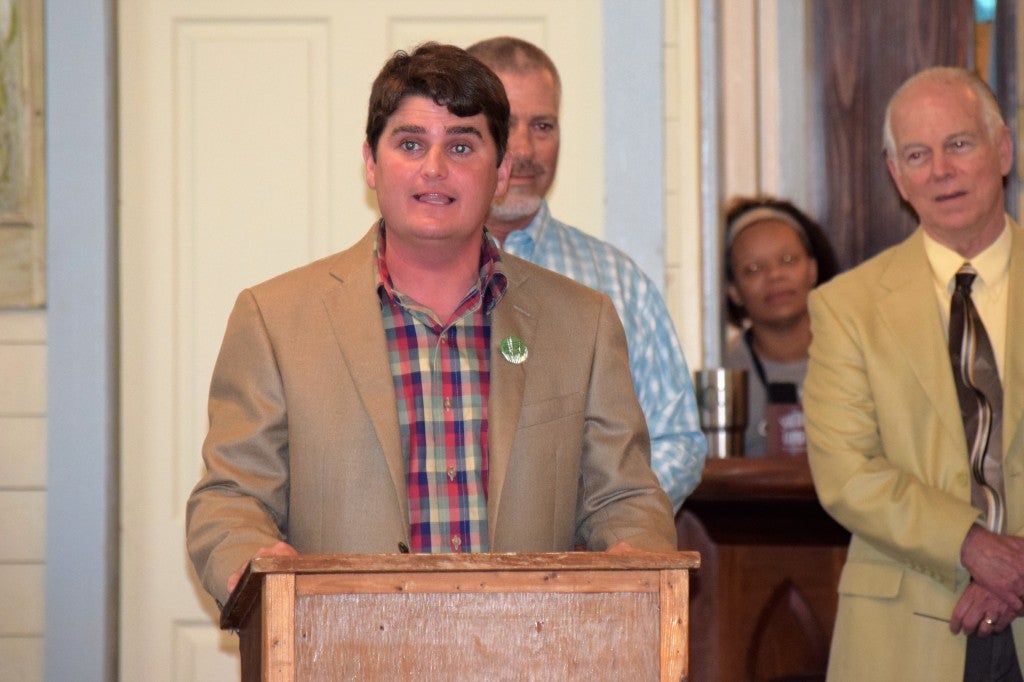
Richie Blink, Restore the Mississippi River Delta Coalition Plaquemines Parish Community Outreach Coordinator
This fact was not lost on Albertine Kimble, Plaquemines Parish native and former Coastal Program Manager, who spoke about the river’s ability to rebuild land and the parish’s urgent need to harness that power. As manager of the parish’s Coastal Program, Kimble selected restoration projects and guided them through completion. As much as any coastal expert in Louisiana, she knows that the river can rebuild land that Plaquemines has lost and sustain existing wetlands. Sediment diversions are a key method for using the Mississippi as a tool for restoration. Diversions redirect sediment from the river to the wetlands outside the levees, allowing the river to nourish the delta it built centuries ago. As Kimble noted, the sediment-laden river rushing by, this is how Plaquemines was built, and this is how it can be sustained.
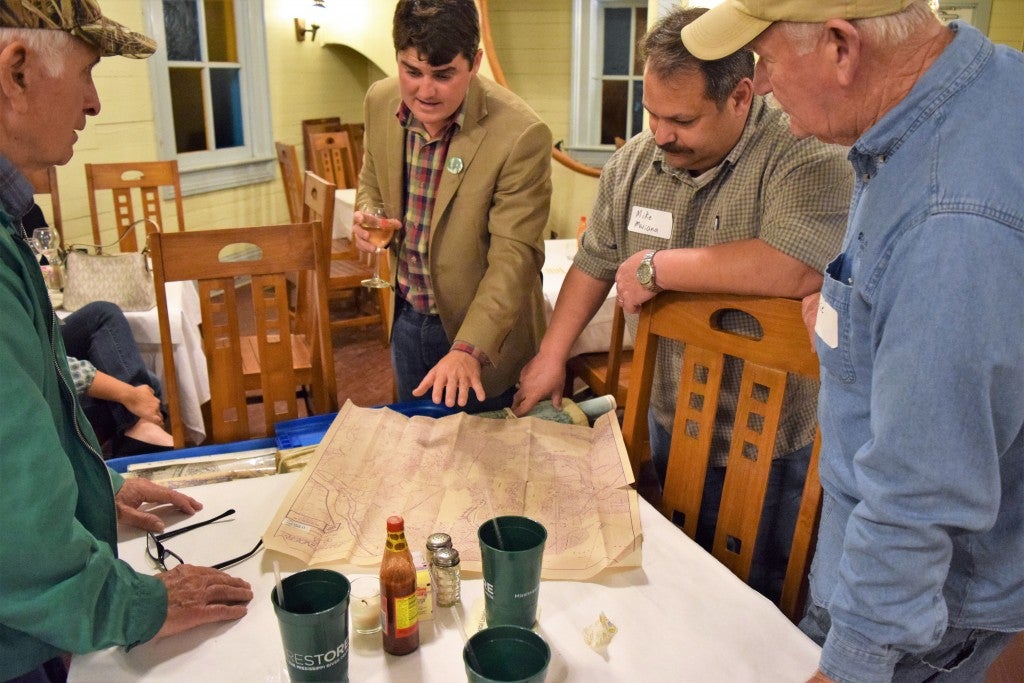
Richie Blink discussing land loss effects on fisheries with local sportsmen.
As the Louisiana Coastal Master Plan notes, no single project type, tool or strategy will restore and protect Louisiana’s coast. Sandy Sanders, Executive Director of the Plaquemines Port, advocated another type of project that will rebuild the wetlands and buffer Plaquemines from the Gulf’s waters. Dredging sediment from the bottom of the river is necessary for keeping the river navigable. Instead of dumping that sediment into the Gulf, Sanders noted, we should be using that land to rebuild marshes outside of the levee system. Leaning on his experience in the Plaquemines business community, Sanders discussed how coastal restoration projects are both environmentally and economically critical for coastal Louisiana and the nation. Restoring the Louisiana coast increases the resiliency of refineries and ports in Plaquemines, which are an economic boon to the local, national and global economies. As Sanders mentioned, gas prices jumped after Hurricane Katrina. Refineries and ports across South Louisiana had sustained damage, and the nation felt those effects. Coastal restoration ties environmental needs to economic benefits, and using dredged material from the Mississippi River advances both of these goals.
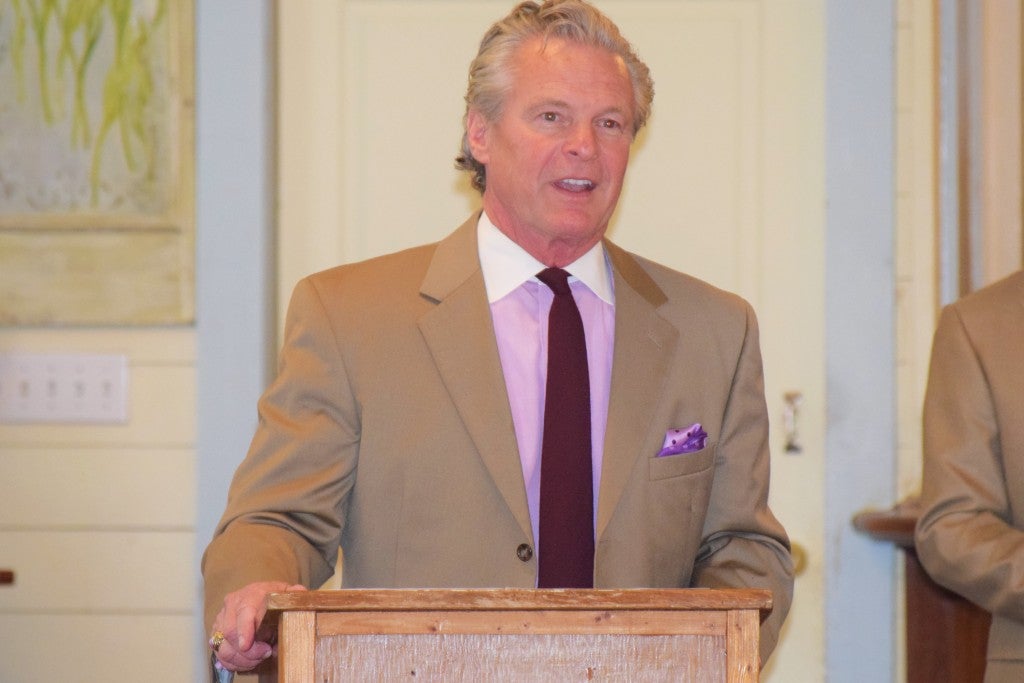
Sandy Sanders, Executive Director of the Plaquemines Port speaking at Wine for the Wetlands.
While constructing these restoration projects is the first step, managing them correctly will be critical. Earl Armstrong, a Plaquemines Parish landowner and long-time resident, spoke to the audience about adaptive management, drawing on his experience fighting for the West Bay sediment diversion. The Army Corps of Engineers sought to close the diversion in 2011 once it started contributing to shoaling in an anchorage for ships near the mouth of the river, which hindered navigation. Armstrong recognized the problem and recommended that, instead of closure, the diversion needed a new management scheme. The Corps built a barrier that would capture the sediment more quickly, building land and solving the navigation issues that had arisen. Because of Armstrong’s efforts, the West Bay diversion is functioning as it should, and it is building new land.
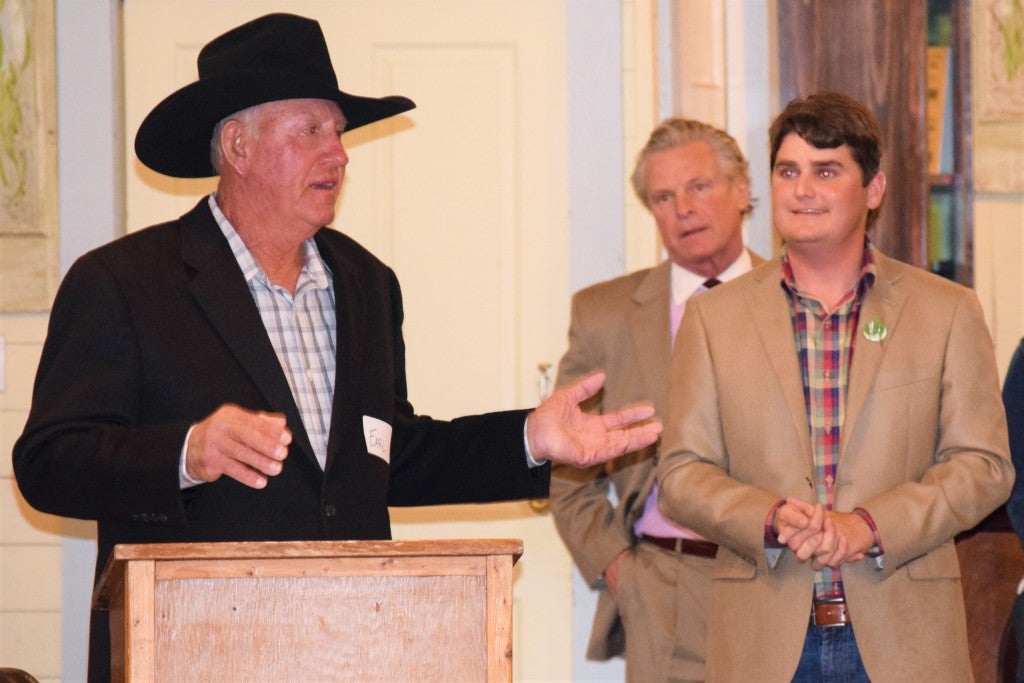
Earl Armstrong speaking at Wine for the Wetlands
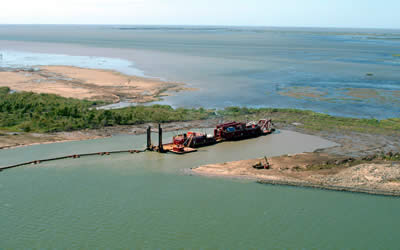
West Bay diversion working to build and sustain land. photo via lacoast.gov.
Coastal restoration events in Louisiana usually display an array of maps with dire projections about land loss and sea level rise. Most of coastal Louisiana is colored red to indicate where land loss will be most significant. Plaquemines Parish is red from New Orleans to the Gulf. At Wine for the Wetlands, Richie Blink, the Coalition’s Plaquemines Parish Community Outreach Coordinator, looked to veer away from this message. “I’m tired of the red map,” he said. “I want to show the positive story.” He hoped to demonstrate what restoration looks like and what it can do for the parish. In a corner of the room, in stark contrast to the typical land loss maps, stood two images of new land built by sediment diversions.
These photographs presented a message of hope: that coastal Louisiana’s future is more complicated than we might think.
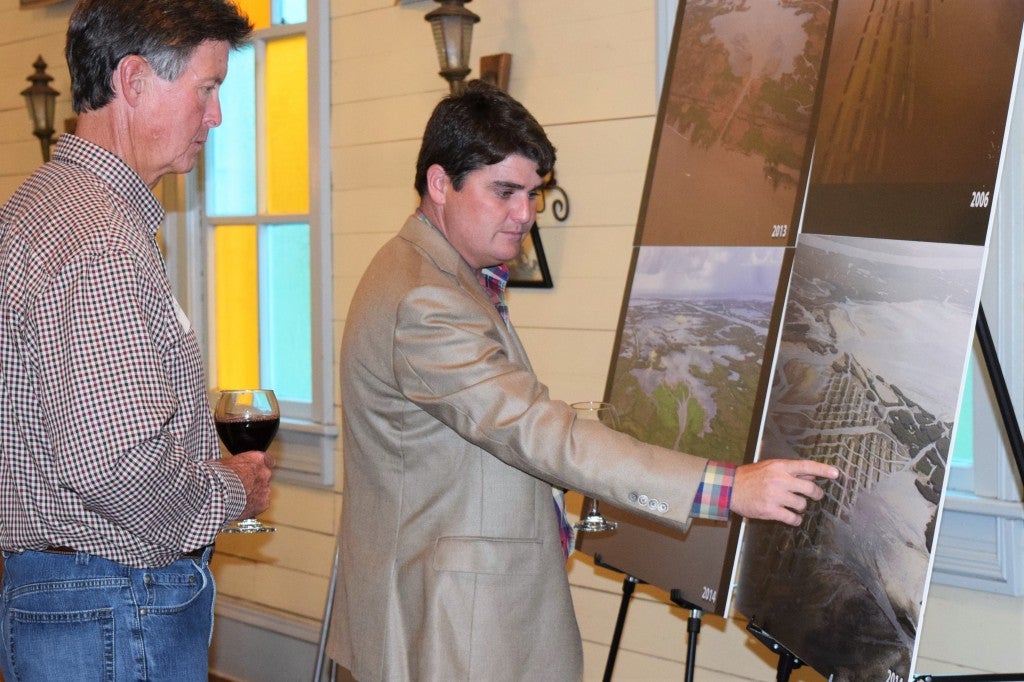
Richie Blink showing new land built by sediment diversions.
Matt Phillips is the Coordinator for the Restore the Mississippi River Delta Coalition’s Outreach Team. He works with organizers around Louisiana on improving the coalition’s community engagement. A native of New York City, Matt graduated from Oberlin College with a Bachelor’s degree in Biology and moved to Louisiana shortly after to work on and learn about the state’s coastal land loss. He lives in New Orleans.